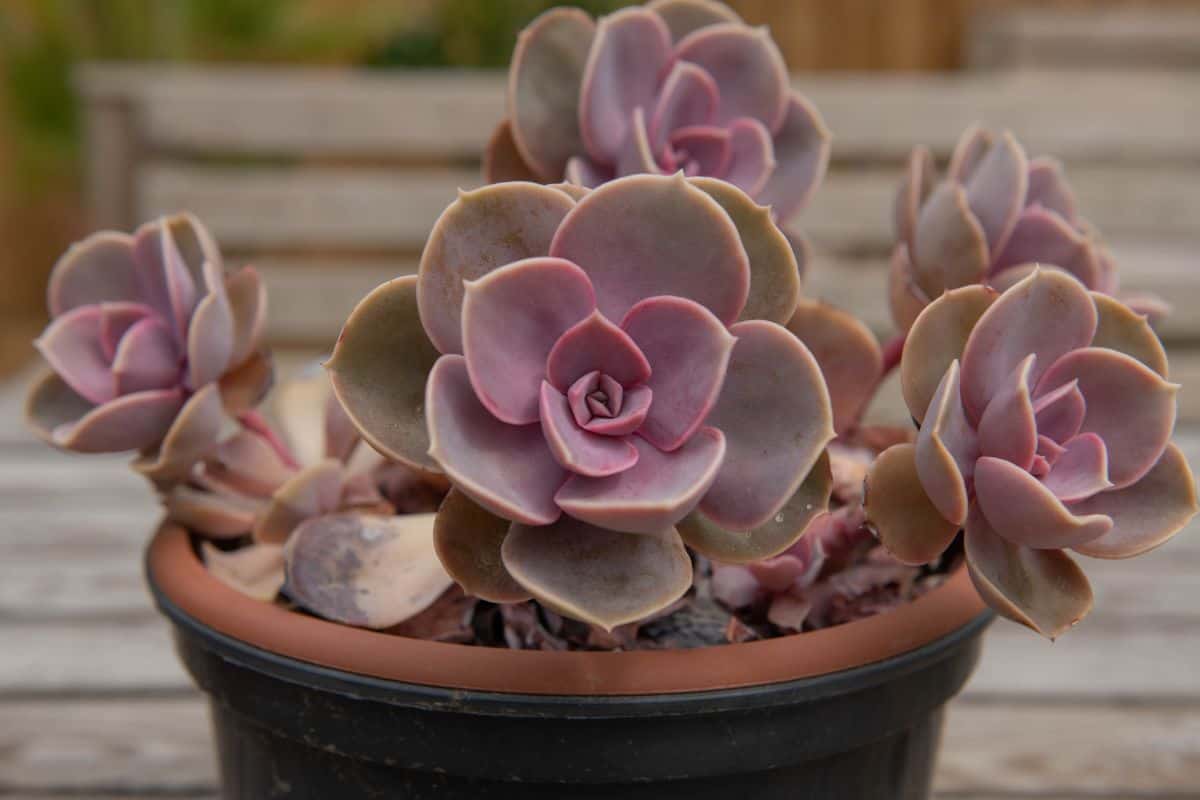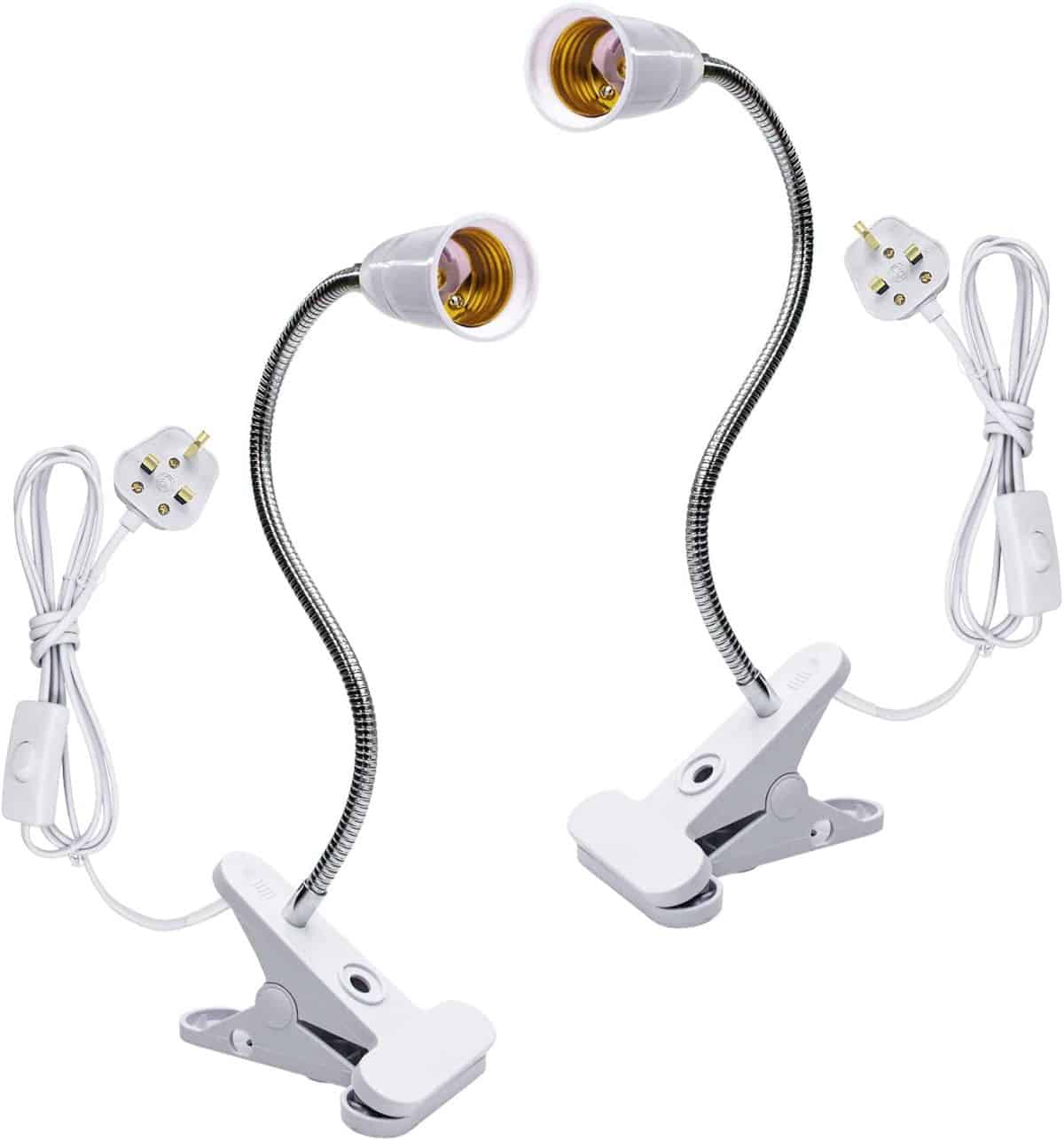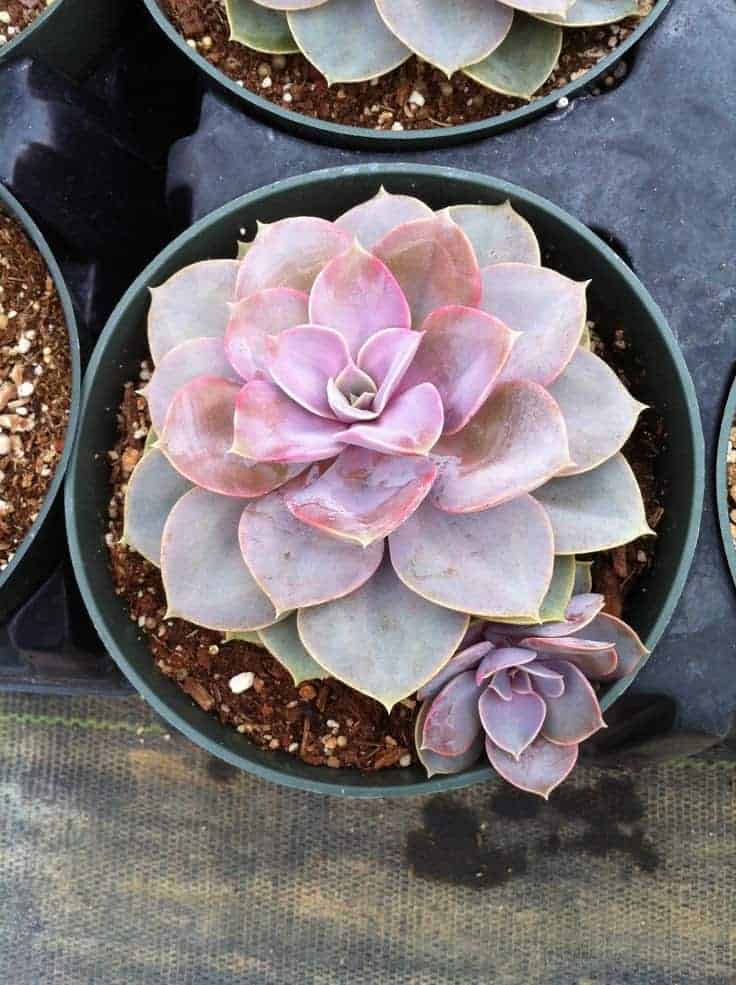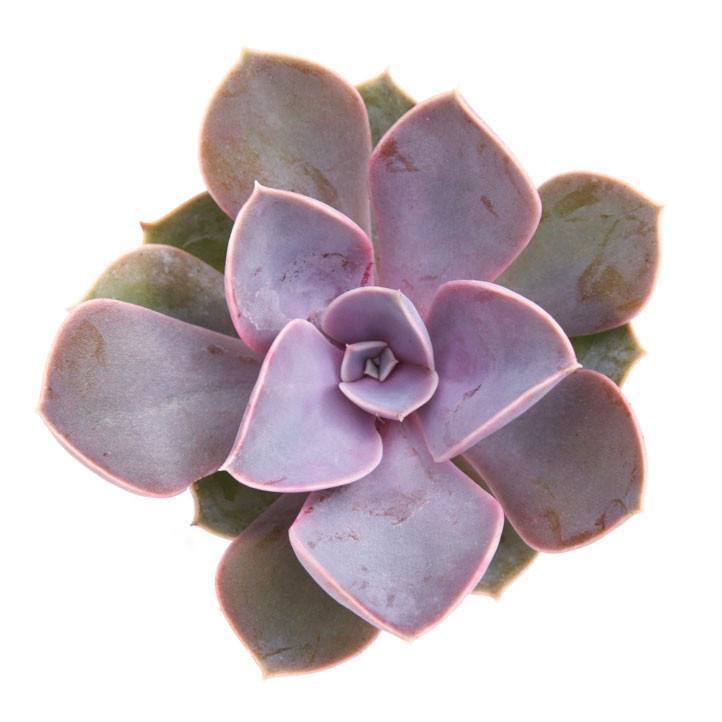
Echeveria "Perle von Nurnburg" translates to the "pearl of Nurnburg". This gorgeous, iconic succulent is popular anywhere plants are sold. The perfect symmetry, broad, inviting leaves, and luscious lavender color make this an enormously attractive plant. The best part? It's so easy to grow.
Jump to:
- History of Echeveria "Perle von Nurnburg"
- Echeveria "Perle von Nurnburg" - Soil Suggestions
- Echeveria "Perle von Nurnburg" - Water Preferences
- Echeveria Watering Tips
- Echeveria "Perle von Nurnburg" - Light Requirements
- Echeveria "Perle von Nurnburg" Cold-Tolerance
- Echeveria "Perle von Nurnburg" Pest Control
- Propagating Echeveria "Perle von Nurnburg"
- Where to find Echeveria "Perle von Nurnburg"
History of Echeveria "Perle von Nurnburg"
| Name: | Echeveria "Perle von Nurnburg" |
| Soil: | Well-draining soil |
| Blooming: | Summer |
| Light: | Direct to full sun |
| Water: | Whenever the soil completely dry |
| Propagation: | Leaves and offsets |
The genus Echeveria was coined by French botanist Augustin Pyramus de Candolle back in 1828. The venerable botanist was on an expedition through Central America in the company of Mexican botanical artist Atanasio Echeverría y Godoy. Augustin was so impressed by Atanasio's artistic prowess, he named one of the families of plants they documented after the artist. Hence, Echeverría became Echeveria and the man was immortalized in nomenclature.
How do you pronounce Echeveria? Well, that's a whole topic in and of itself.
This particular Echeveria, Perle von Nurnburg, is actually not a naturally-occurring species. It is a hybrid of two different Echeveria: E. gibbiflora "Metallica" and E. elegans (formerly E. potosina)


Looking at these two succulents, it's easy to see how our E. Perle von Nurnburg is a combination of the two.
This divine union was conceived of by the preeminent Richard Graessner of Germany sometime in the 1930s. Back in his day, Graessner was considered a succulent expert - and his legacy lives on through PVN.
Read Also: DON'T Make a Succulent Terrarium. Here's Why.
Echeveria "Perle von Nurnburg" - Soil Suggestions

Like all succulents, PVN really just wants some well-draining soil.
Since plants get air through their roots, it's important that the soil surrounding those roots has certain qualities. Fast-draining soil is imperative. If roots remain waterlogged for too long, they'll rot. Succulents are particularly susceptible to root rot.
A loose soil is also really nice, as it allows airflow around the roots. Mixing some larger substrate like gravel or lava rocks into your soil can help break it up. Soils tend to get compacted over time with repeated waterings, which is why it's good to repot every couple of years.
There are a couple of approaches to getting the dirt you need. First, you can make your own soil. Simply purchase some regular potting soil and pumice (or perlite), mix it together in a 1:1 ratio and voila - cheap, easy, succulent soil. We also wrote a whole guide with everything you need to know about succulent soil.
If you don't have time for all that, you can just buy some pre-made mix. Note that not all mixes are created equal! We've reviewed many different kinds and compiled this list of the best succulent and cactus soil mixes. Here's everyone's favorite mix: Black Gold.
See Also: 10 Non-Toxic, Pet-Safe Succulents
Now, the following may come as a surprise to you, but hear me out.
No products found.
Do not put gravel in the bottom of your pot.
I know this might go against everything you've ever learned, but gravel does not promote drainage. In fact, it does the opposite. It holds water up near plant roots, and prevents it from draining out of the bottom.
I won't get into it here, but the phenomenon is called "perched water table" and the reason for it is some physics magic. If you want to know more, read this. But for the meantime - no gravel!
Echeveria "Perle von Nurnburg" - Water Preferences

Much like its soil preferences, our purple plant pal shares the same watering habits as most other succulents. That is, it prefers to be drenched infrequently.
While lots of tropical plants thrive off of humidity or a little bit of water every day or two, succulents are the opposite. They prefer dry air and dry roots, so they need a lot of time between watering.
But it's not like they need any less water. The solution then, is to give it to them all at once.
It's hard to prescribe a watering regimen without knowing the details of your plant's living conditions. Factors like humidity, level of light, temperature, soil composition, and more all influence how often your plant needs to be watered.
That being said, a good rule of thumb is this: wait for the soil to dry completely, then wait a couple days. Only then may you water. Pour water into the pot until you see water start to come out of the drainage hole. (We don't recommend planting succulents in containers without drainage, but if you do, here's an alternate guide for caring for succulents in containers without drainage).
Following this rule, I water about once a week. This is a pretty common habit for many succulent owners, and weekend watering is a nice habit to get into.
When your plant is dormant (many succulents are dormant during the winter), you should reduce your watering frequency by half. I water mine once every two weeks in the winter.
Of course, you should closely monitor your own plants to determine what watering schedule works for you. Some people only need to water once a month.
Echeveria Watering Tips

One of the biggest mistakes people make when watering is just pouring the water right onto the plant. Showers are nice and all, but not super helpful to succulents.
In fact, it can be detrimental - and to Echeveria especially. Those beautiful, compact rosettes that characterize the genus are really good at holding water.
Unfortunately, this is only bad for the succy. They can't take in any water from their leaves or stem anyway; it all has to come through their roots. That water that's pooling on the leaves can magnify sunlight, causing brown burn spots. The increased moisture also presents an opening for fungi and pests to get in.
So be sure to water at the base of the plant! Use a turkey baster, a wash bottle, or a watering can with a spout. Whatever you can do to put the water under the leaves, not on them.

Spout/trunk, whatever works.
Echeveria "Perle von Nurnburg" - Light Requirements
Simply put, PVN can grow anywhere from indirect light to full sun. It's pretty flexible.
However, you'll want to stay away from the low-light options. Echeveria tend to get very leggy, very fast if there's not enough light. Getting leggy or stretching are examples of etiolation (abnormal growth due to lack of light).
To be fair, an etiolated plant can be perfectly healthy while etiolated. The only problem is that it's really ugly - and irreversible.
Another problem with low-light situations is that many succulents only display their vivid coloration when exposed to a lot of light. This is called "sun-stress", and it can drastically change the color of your plants.
It's not uncommon to buy a bright red succulent of some sort, only to have it fade to a dull brown or green a couple weeks after you take it home.
And PVN is no different. That sublime lavender color will fade if not exposed to enough light. For this reason, it's not a great office plant.
It can be grown indoors, though. Placing it in a window with a lot of light should be sufficient in most cases. If you're in the northern hemisphere, try a south-facing window.
If you lack well-lit windows, you might want a grow light. Those can be simple, desk-clip gooseneck lamps or 6ft tube lights. For a single plant, something like this should suffice.

If you want more info about grow lights, check out this write up. It'll tell you all about lumens and color temperature and all that good stuff.
Echeveria "Perle von Nurnburg" Cold-Tolerance
As you know, most fat plants despise the cold. With the exception of a few species, succulents suffer ill effects as temperatures near freezing. Generally when the temperature starts to dip below 40 F the plant is in danger.
PVN, however, is a bit more tolerant than its fellows. While many Echeveria will shudder from the mere thought of cold, PVN don't care. In fact, it can often endure temperatures a couple degrees below 30 F.
Still, I wouldn't call it a frost-resistant plant. It's hardy, certainly, but even the Pearl of Nurnburg will succumb to ice eventually. Do your pal a favor and winterize your succulent collection (before the cold hits).
Echeveria "Perle von Nurnburg" Pest Control
While succulents, in general, are not susceptible to many kinds of pests, there are a few that get bothersome.
You'll want to watch out for scale, spider mites, fungus gnats, and mealybugs. It's rare that you'd have to worry about aphids. If you think you have a pest, read this guide on identifying and treating common succulent pests.
Echeveria, specifically, tend to be victims of mealybugs more frequent than other cacti or succulents. Fortunately, those are pretty easy to treat. Try applying some 70% isopropyl alcohol to the affected area every day for a few days. If that doesn't work, check out this comprehensive guide on dealing with mealybugs.
Propagating Echeveria "Perle von Nurnburg"

An essential part of any succulent collector's journey, propagation is the best/cheapest way to get more plants.
And we're in luck - Echeveria are some of the easiest to propagate. We won't go into too much detail here, since we already wrote about propagation in depth, but here's a quick run down.
Leaf - You can just pluck a leaf off and lay it on some dirt. It's that simple, really. The only catch is it should be a clean separation, so hold it firmly by the base of the leaf and slowly work it off. I usually just toss it in the bottom of the pot with the mother plant (assuming you have no soil dressing). It'll take a long time to turn into a full plant, but hey - no maintenance.
Beheading - It sounds scary, but it's really just regular pruning. You want to behead a part of the plant with a full, healthy rosette. Pluck the leaves so there's about 2 inches bare stem (propagate those!), then cut. Let that cutting dry for a couple days so it has a nice callus, then plop it back in the ground.
Pups - Seriously, it can't get any easier than this. Echeveria often self-propagate by growing pups/buds. These mini-plants just grow out of the momma, and once they're an inch or so across you can snip it and plant it elsewhere!
Where to find Echeveria "Perle von Nurnburg"
Well, since we already established that it's an artificial plant species, you're unlikely to find it in the wild (no matter how many desert expeditions you mount).
The good news is that it's a really common plant. You can usually find PVN at those large home-improvement stores. The grocery store chain Trader Joe's is well-known for carrying these guys, too.
Online you have a bunch of options. Here's 7 of our favorite online succulent stores if you wanna look through them. This time, though, we did the work for you. Just look at these sexy succulents.
The Succulent Source - one of the most consistent and quality places to get plants online. No one has ever been disappointed with an order from these guys.
No less impressive is Leaf and Clay, the spot for premium succulents on the web. Their slick site is chock-full of surprises; just look at their rare succulent collection.
Are there any aspects of Perle care that we missed? Ask questions below in the comments!



Lillian
Hi are you a Canadian company I would like to order.I live in Saskatchewan so when would you ship and the cost.Don,t see a order form.thanks Lillian
Patrick
Hey Lillian! Thanks for reaching out.
Sublime Succulents doesn't actually sell any plants, though if you navigate to the store tab you'll find some accessories!
Clicking on the links to Leaf and Clay or The Succulent Source (the last two images in the article) will bring you to a site you can shop for plants.
Good luck!
Roland
Hi! I want to correct an error regarding drainage and gravel. Some people put gravel in the bottom of pots that have no drainage holes, to create 'drainage'. That's when the water pools. It's best they have a hole(s) drilled into the bottom of those pots, or find a pot with a drainage hole.
Christina
Thanks so much for all the great information! I’m currently waiting for my PVN from Mountain Crest Gardens and I’m so excited!